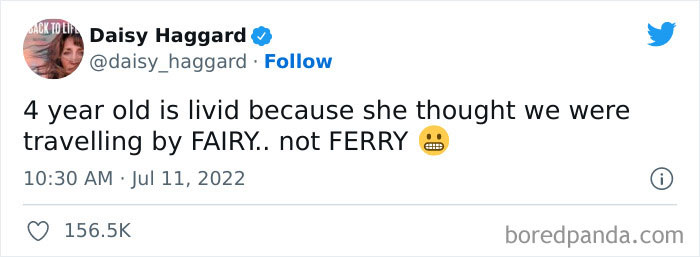Children are so smart. Their little brains are like sponges, and they pick up knowledge, language and skills incredibly quickly. But another special thing about them is that their minds are not yet tainted by the confines of logic. If you tell them Santa Claus travels around the world in one night and sneaks in through the chimney, they just might believe you. Why wouldn’t they believe you? Adults know everything, right?
Actress Daisy Haggard recently tweeted about a misunderstanding between her and her four-year-old daughter about traveling via ferry rather than fairy, and she inspired many other parents to share similar stories. We’ve gathered some of the most adorable and hilarious misunderstandings between children and adults down below for you to enjoy, and I’ll be honest, I wish that most of these kids were actually right. Can you imagine traveling on a fairy? That would be the best day of my life!
Be sure to upvote all of your favorite posts, and let us know in the comments if any children in your life have ever hilariously misunderstood something you said. Then if you’re interested in reading more of the funniest things kids have ever said, check out this Bored Panda piece next.
#1

Image credits: KimHuntHarris
Whether it’s the Tooth Fairy, the Easter Bunny or the existence of unicorns and mermaids, kids are inclined to believe many things that are not actually true. Their innocence and naivety can be adorable and even inspiring at times, but they can’t help it. And according to research, three-year-olds are particularly trusting, as they do not develop skepticism until they are a bit older. Vikram K. Jaswal of the University of Virginia decided to put this idea to the test and asked, “Why are they so willing to accept somebody else’s word, for example, that an eel is a fish, when it looks so much like a snake?”
So he conducted a study to determine whether three-year-olds are more trusting of information shown to them without words or information explicitly stated. So in one experiment, Jaswal had someone show kids a yellow cup and a red cup then hide a sticker under the red cup. With some of the participants, she falsely stated that they sticker was under the yellow cup, and with others, she placed an arrow on the yellow cup without telling them anything. The kids were given the opportunity to search underneath one cup and were allowed to keep the sticker if they found it. The game was played eight times with different pairs of colored cups.
#2
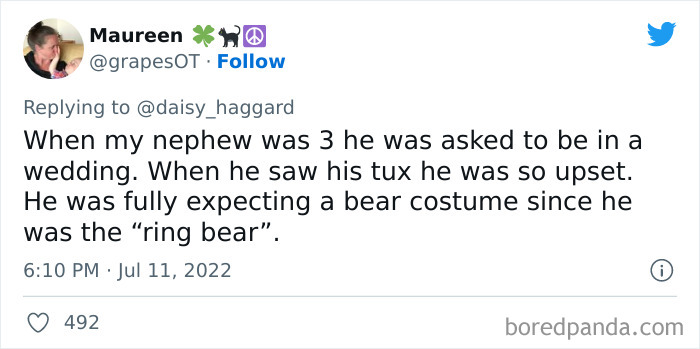
Image credits: grapesOT
#3

Image credits: amybuchwald
The kids who watched the woman place the arrow on the wrong cup quickly learned that they could not listen to what she told them, but the kids who were told where the sticker was took her word for it. Of the 16 participants, 9 kids never found a sticker. Even if they had been misled seven times in a row, on their eighth opportunity, they continued to believe the woman. And I know what you might be thinking, “That’s cruel to withhold stickers from children!” Don’t worry, they all got a sticker in the end.
“Children have developed a specific bias to believe what they’re told,” Jaswal says. “It’s sort of a short cut to keep them from having to evaluate what people say. It’s useful because most of the time parents and caregivers tell children things that they believe to be true.” This information is useful when teaching a child something that they should just take your word for, like crossing the street without looking both ways is extremely dangerous, but it can also make it challenging to correct their beliefs when they have been led astray. (Or misunderstood what the word ferry meant…)
#4

Image credits: stevewatson1952
#5

Image credits: mrs_mcgettrick
#6

Image credits: herdirtytoes
So why do kids believe ridiculous claims like the fact that Santa Claus exists? Is it simply because they have been told? Apparently, 83% of five-year-olds believe in Santa, but this might even be part of an evolutionary advantage. Author and ethologist Richard Dawkins proposed the idea that children being so impressionable is an evolutionary advantage in a 1995 essay where he used the example of a kid living near an alligator-infested swamp. He explained that if the child naturally questioned what their parents had told them, they might wander off into the swamp and be eaten. Before they are old enough to understand the danger that lurks in the swamp, it is important that they simply trust what their parents tell them.
But kids are not completely blind listeners. Especially when they reach five years old or older, they start learning how to use knowledge and expertise to evaluate what is true. Professor and Department of Psychology Chair at the University of Texas at Austin, Jacqueline D. Woolley, explains in a piece for The Conversation that kids start figuring out who to believe about certain topics, in the same way that adults do, when they are quite young.
#7
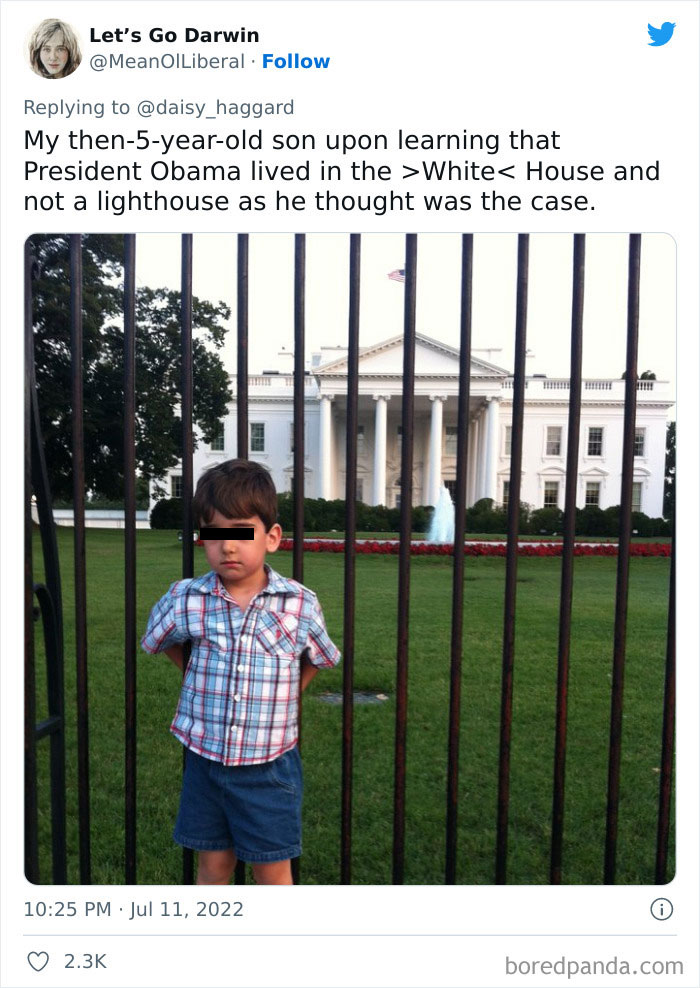
Image credits: MeanOlLiberal
#8

Image credits: KawaVulcanRider
#9
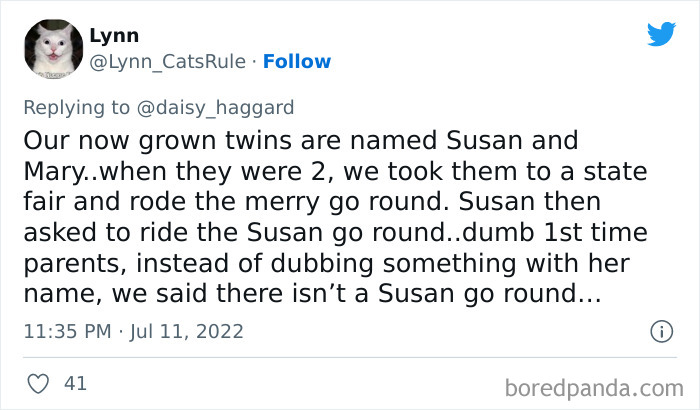
Image credits: Lynn_CatsRule
Professor Woolley used the example of an experiment she conducted where participants between the ages of 5-8 were presented with examples of animals that were either possible, like a fish that lives in the ocean, impossible, like a fish that lives on the moon, or improbable, like a fish that is as large as a car. They were given the opportunity to decide on their own whether these animals existed or to ask someone else. The kids even heard reports from either a zookeeper or a chef. The researchers found that children consistently believed in the possible entities and were able to rule out the impossible ones. They determined what was possible by using their existing knowledge, and for the improbable animals, they were significantly more likely to believe in them when the zookeeper validated their existence than when the chef did.
#10
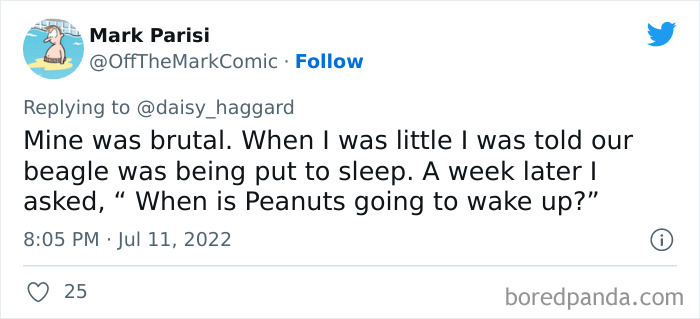
Image credits: OffTheMarkComic
#11

Image credits: pmross
#12
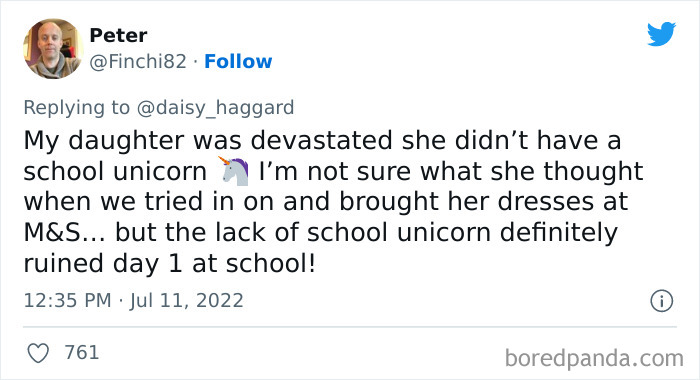
Image credits: Finchi82
So when it comes to outlandish claims that kids believe, it seems to be more the fault of the parents for spreading these lies in the first place. I’m not saying that upholding the myth of Santa Claus or the Tooth Fairy is harmful at all, but we shouldn't blame children for believing in them when many of us go out of our way to make them seem realistic. One study found that 84% of parents reported they had taken their child to visit more than two Santa impersonators during the holiday season. The Elf on the Shelf is also a multi-million dollar franchise, and the United States Postal Service promotes a “Letters from Santa” program where it sends out personalized replies to children’s letters. Combined with the countless holiday movies promoting the myth of Santa Claus and the half-eaten cookies and presents under the tree that many kids find on Christmas morning, it shouldn’t be surprising at all how so many children believe in the magic of Santa.
#13

Image credits: PaulNut
#14
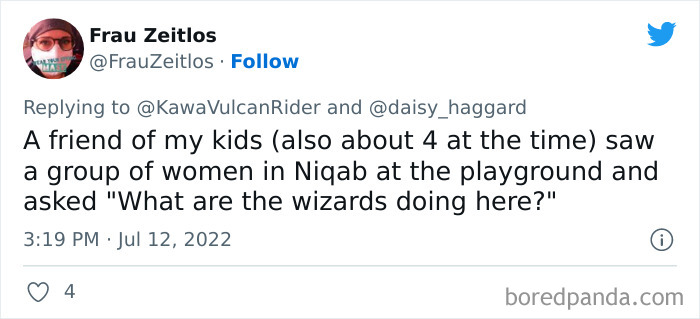
Image credits: FrauZeitlos
#15
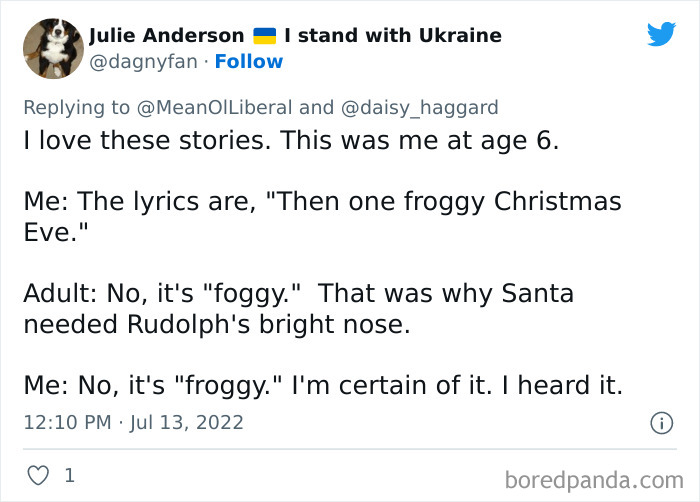
Image credits: dagnyfan
While the gullibility of little kids can be hilarious and entertaining in many situations, like in the tweets featured on this list, it can also be something parents must be mindful of when their children start spending more time online. According to one survey, 20% of kids between the ages of 12-15 believe all information generated from a Google search must be true. Kids also are not as savvy when recognizing ads, as only 16% of kids between the ages of 8-11 spotted that the top two results from a search for “trainers” were marked as paid promotions. It is almost impossible to keep kids off the internet nowadays, so it is important that they understand to be wary when reading things online. Just like kids should know that everything they hear from their peers is not true, parents and guardians must also instill a bit of skepticism in kids when they’re scrolling on the internet.
#16

Image credits: fantasticpru
#17

Image credits: ReallyJaneK
#18
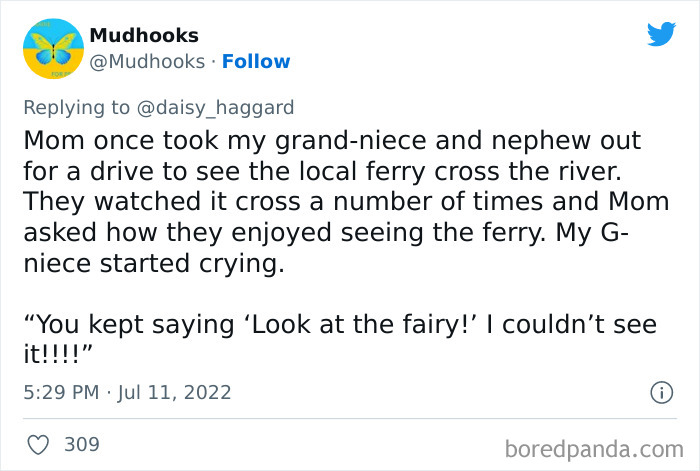
Image credits: Mudhooks
There is plenty of talk about how impressionable and gullible kids are, but are adults much better? Plenty of individuals fall prey to believing conspiracy theories, fake news, and cult indoctrination, so we really cannot blame young, developing minds for misunderstanding things that we say. As Dr. Susan Krauss Whitbourne writes in a piece for Psychology Today, “According to Macquarie University’s Alessandra Teunisse and colleagues (2020), despite the fact that scams have become a part of everyday life, there is little psychological research on the gullibility that leads those scams to work. Indeed, the Australian authors note, ‘In 2017, financial and romantic scams cost consumers in the United States more than US$1.42 billion’, resulting in more than 300,000 complaints made to government authorities in that one year alone. However, psychology has established the fact that people are amazingly likely to accept pseudoscientific claims that amount to no more than superstition and magic, such as paranormal phenomena.”
#19
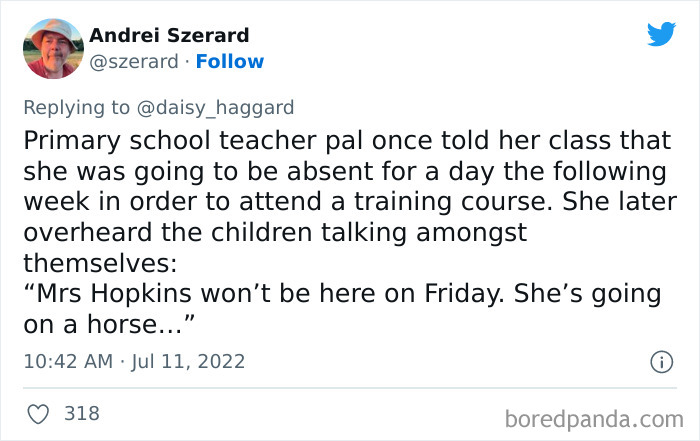
Image credits: szerard
#20
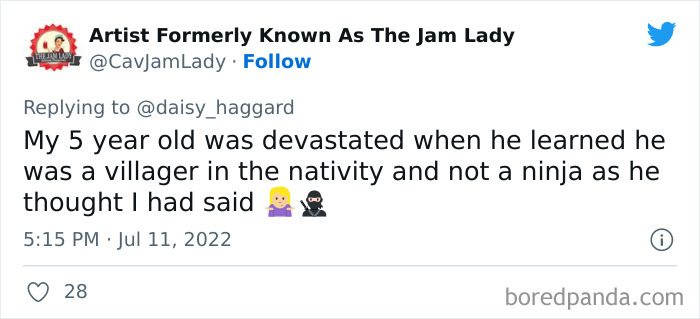
Image credits: CavJamLady
#21

Image credits: LeahFHardy
Dr. Krauss Whitbourne goes on to explain that being gullible is likely not just a lack of critical thinking; it may actually be out of an individual’s control. If someone is low on the facet of social intelligence that allows most of us to spot a scam or realize when a romantic partner is not being completely genuine, they might always be gullible. These same people tend to also be highly influenced by persuasion tactics, such as a charming and convincing salesperson, Dr. Krauss Whitbourne notes. “Later on, you regret having given in to these people because neither the deal nor the partner were as good as they sounded in the heat of the moment,” she writes. “It’s not that the offer was necessarily based on false pretenses, but that you became pressured by their highly manipulative tactics into a decision that was not exactly ideal.”
#22

Image credits: JonBatchelor8
#23

Image credits: mrrichardjohnw1
#24

Image credits: NellWitty
For individuals who are particularly gullible, it may help to score themselves on the scale developed by Alessandra Teunisse and her colleagues. Including 12 statements that participants can score themselves between 1-7 on (1 being strongly disagree and 7 being strongly agree), this test features two factors: persuadability and insensitivity to untrustworthiness cues. Some of the test’s statements include: “I’m pretty good at working out when someone is trying to fool me”; “I’m not that good at reading the signs that someone is trying to manipulate me”; “My family thinks I am an easy target for scammers”; and “People think I’m a little naïve”.
#25
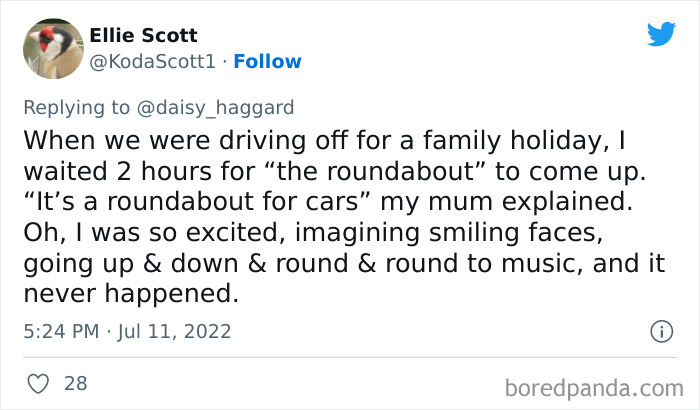
Image credits: KodaScott1
#26

Image credits: Alderley
#27
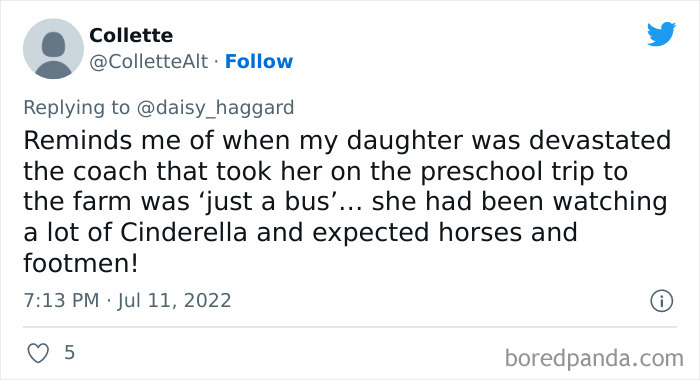
Image credits: ColletteAlt
Whether this list is bringing back memories from your own childhood or reminding you of all the times you unintentionally misled your own kids, we hope you are enjoying these hilarious misunderstandings. Be sure to keep upvoting your favorite tweets so your fellow pandas catch the best ones, and then let us know in the comments if you have any personal stories that could have made it onto this list. Then if you want to hear even more funny things kids have said, check out this Bored Panda story next.
#28

Image credits: stuart0beach
#29

Image credits: Kellie68961375
#30

Image credits: EvelynWilcock
#31

Image credits: Thursdaytoday
#32

Image credits: KellyMasters10
#33

Image credits: Bru060
#34
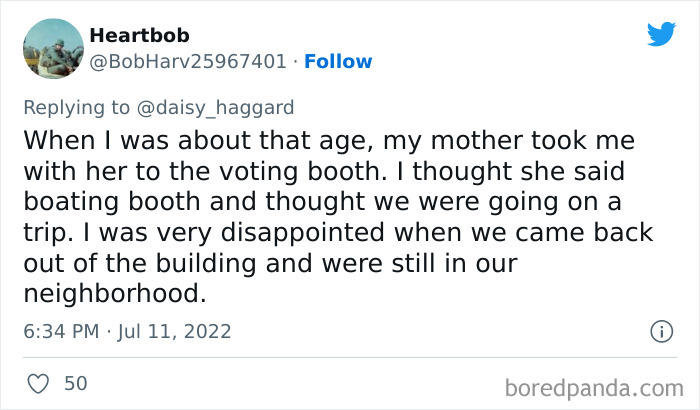
Image credits: BobHarv25967401
#35

Image credits: YvonneBrining
#36

Image credits: earthyjules
#37

Image credits: peckhamsian
#38

Image credits: krisdikeman
#39
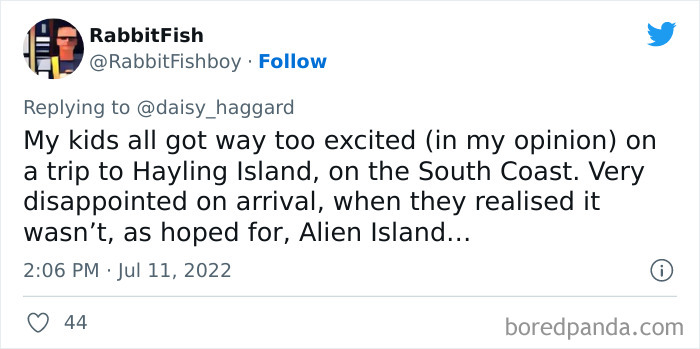
Image credits: RabbitFishboy
#40
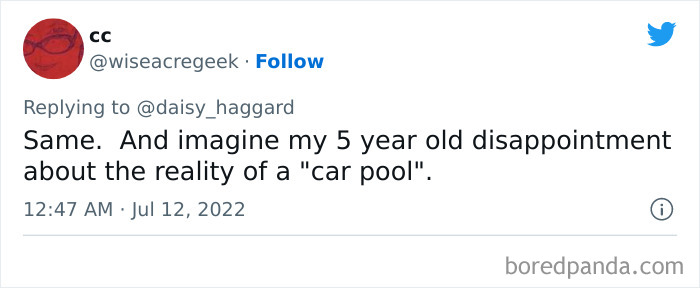
Image credits: wiseacregeek
#41
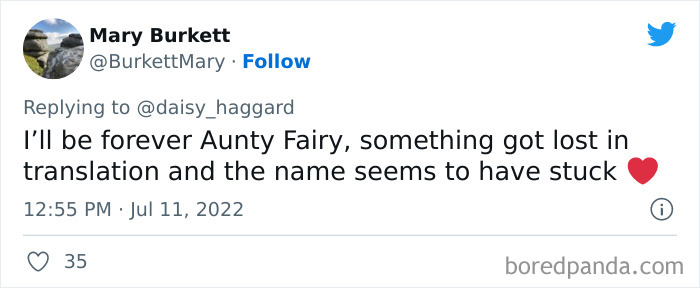
Image credits: BurkettMary
#42
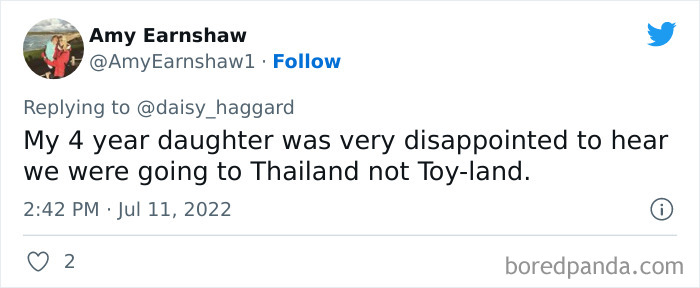
Image credits: AmyEarnshaw1
#43
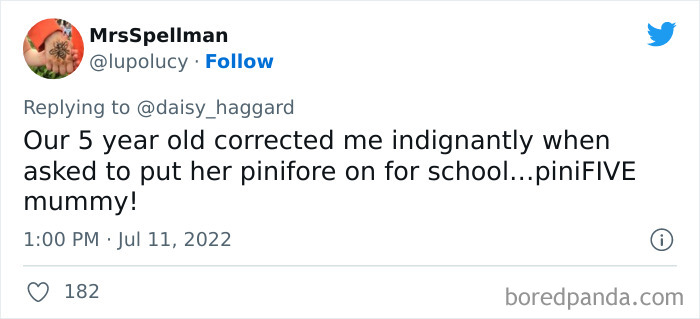
Image credits: lupolucy
#44

Image credits: chefjustrob
#45

Image credits: EpiJackie
#46
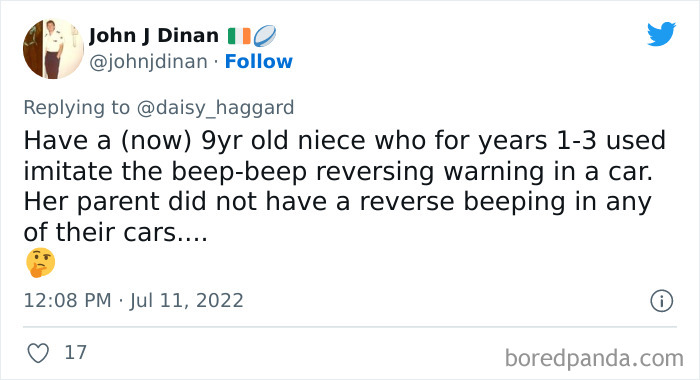
Image credits: johnjdinan
#47

Image credits: Graynurseshark
#48

Image credits: stepickford
#49
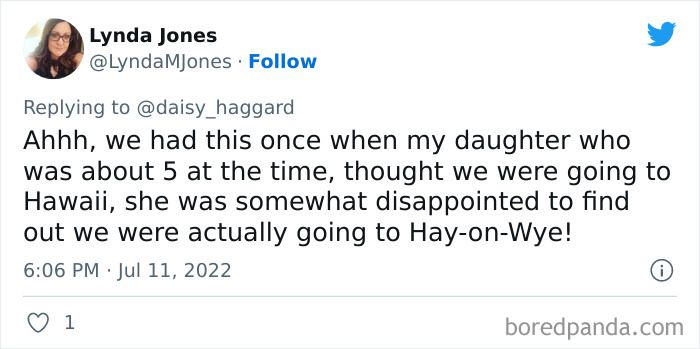
Image credits: LyndaMJones
#50

Image credits: KateHudson
#51
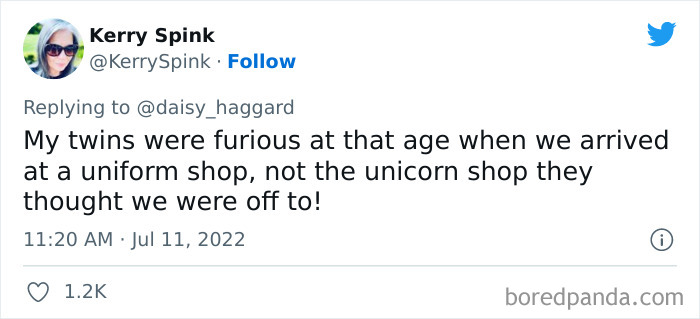
Image credits: KerrySpink
#52
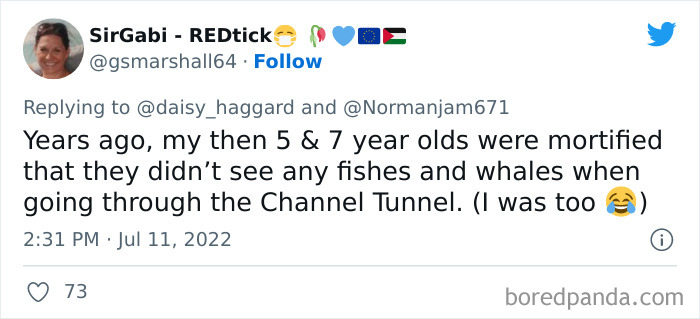
Image credits: gsmarshall64
#53

Image credits: zocookie
#54

Image credits: AndyWillis61
#55

Image credits: svjdempz
#56

Image credits: msinburslem
#57

Image credits: alibaldie
#58

Image credits: bo_wom
#59

Image credits: RenshawPhilip
#60
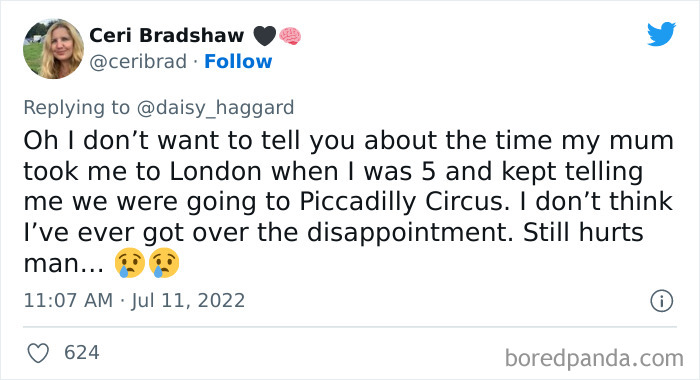
Image credits: ceribrad
#61

Image credits: RachaelPearce12
#62
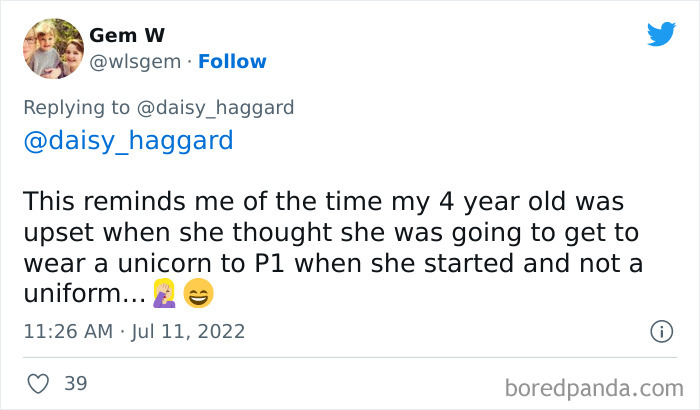
Image credits: wlsgem
#63
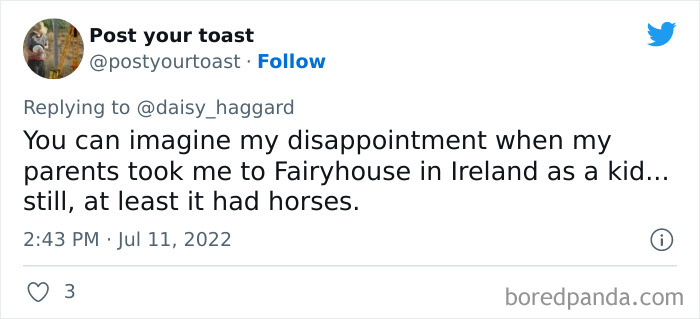
Image credits: postyourtoast
#64

Image credits: youngfuddyduddy
#65

Image credits: VilmaLay
#66

Image credits: RuthBacon4
#67

Image credits: twatterings
#68

Image credits: jenliveh
from Bored Panda https://bit.ly/3OMUpt8
via Boredpanda
